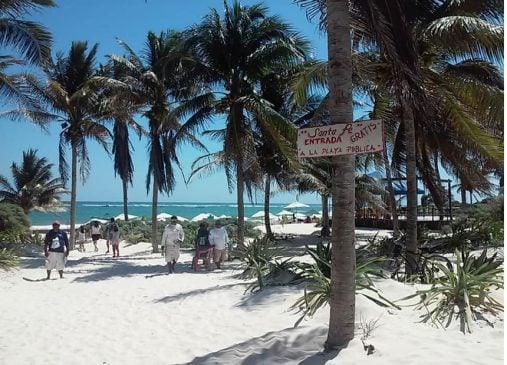Tulum, Q.R. — Archaeologists in Tulum have reported on the discovery of a chultún. A chultún is an underground bottle-shaped compartment that appears as the predominant element for the collection of rainwater.
The recent finding is reported to be 2.48 meters in diameter and 2.39 meters deep, with a rectangular entrance, 54 centimeters long by 46 centimeters wide, inside Building 25, called Casa del Halach Uinic.
It is of particular interest since it is the only one found inside a building.
The discovery of the deposit, whose age could correspond to the first occupation of the site prior to the Late Postclassic period (1200-1550 AD), was recorded during the development of work of the Program for the Improvement of Archaeological Zones (Promeza) through the National Institute of Anthropology and History (INAH).
The coordinator of the Promeza Research project in Tulum, José Antonio Reyes Solís, reported that in the walled area of the ancient city there are two chultuns, located outdoors, which are believed to have functioned as water receivers, “which shows a marked difference with the one that was recently discovered, which, in addition to being roofed and inside a building, has no signs of having stored any liquid, but rather, it is believed, it functioned as a storehouse for food and plants, and later, had a ritual use.”
The chultún, detailed the field manager and member of the project Enrique Marín Vázquez, “is made up of a layer of ground coral one to two centimeters thick that formed part of the soil surface, and underneath we found reddish clay.
“Inside, fillings of medium-sized stones, thick layers of pure ash were found and in the deepest part, we unearthed human bone remains and burned stones.”
Both the burned rocks and the layers of ash, he added, “tell us that there were continuous combustion processes prior to the construction of the chultún, since the walls of the latter are free of any evidence of fire or soot.”
The human remains found, he said, are in the process of investigation at the Physical Anthropology Laboratory of the INAH Quintana Roo Center, headed by Dr. Allan Ortega Muñoz.
It is hypothesized that they could correspond to three infants whose bodies were buried with other materials such as deer antlers, shark teeth, shell earrings and other elements that break with the use that had originally been given to the underground compartment in previous stages.
Another aspect to highlight, added Marín Vázquez, are the fillings after the chultún, which indicate that there was a possible looting during the pre-Hispanic or colonial era.
In this regard, the archaeologist and collaborator of the project, Felipe Nava Ahuatzin, emphasized that “there is a theory that the underground compartment dates back to the first occupation of Tulum, which will be corroborated with the analysis of the sediments found, which may also be reveal the type of food that was consumed and what the vegetation was at the time, among other relevant data.”


